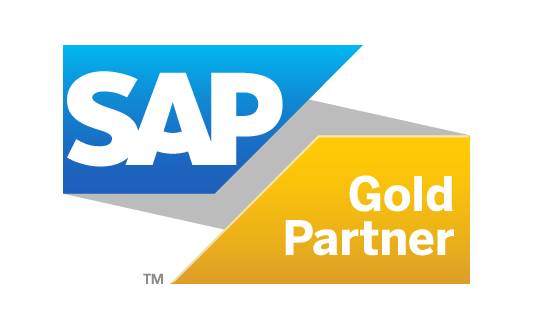Successful enterprises develop data-driven strategies. Our analytics experts support customers in using the data from their SAP Business Intelligence solutions to make well-founded, informed decisions.
SAP Business Intelligence – the key solutions and tools
SAP Business Intelligence is the name for a range of tools that are used to collate and evaluate data stored in data warehouses.

SAP offers the following
warehouse solutions:
SAP Business Warehouse (BW)
A traditional solution, targeting on-premise operation. It is frequently used for reporting in SAP ERP systems and includes data management and data mining functions.
SAP BW/4HANA
A special version of SAP BW design for the latest generation of database. It is also a prerequisite for using S/4HANA Embedded Analytics, the output of which can be viewed in Fiori apps.
SAP Datasphere
SAP’s first cloud-native data warehouse solution, provided using a SaaS model. Based on the SAP HANA cloud database, it also supports integrations with SAP and third-party data sources and data lakes.
SAP Business Intelligence offers a range of front-end applications for data evaluation, allowing users to view evaluation results and create reports.
SAP Analytics Cloud
A self-service tool that expands business intelligence with predictive analyses for data-based planning and the creation of dashboards and other data visualizations at the push of a button.
SAP BusinessObjects Web Intelligence
Part of the SAP BusinessObjects Business Intelligence suite. Generates uncomplicated reports in a browser, with an interface to mobile devices.
SAP Analysis for Microsoft Office
This solution is a Power Pivot front-end that links SAP data with an Office user and presents analysis results clearly in a Microsoft front-end, such as an Excel worksheet.
SAP Crystal Reports
Part of the SAP BusinessObjects Business Intelligence suite. Combines information from databases and individual files, displaying it in tables and charts.
Lumira
Part of the SAP BusinessObjects Business Intelligence suite. Creates transparent and meaningful data visualizations and allows users to run self-service analyses across different business areas.
Benefits of SAP BI
A major advantage of the SAP Business Intelligence solutions is their native integration with existing SAP systems. This means that existing business content such as data models and reports that have been created by these systems are already stored in the data warehouse. As a result, companies that want to start expanding their data resource do not need to start from scratch. In addition, the underlying ERP core is a product that has been constantly developed and optimised for over 30 years. The exported data therefore meet two key requirements for SAP Business Intelligence software: As well as being high quality and meaningful, it has a consistent, uniform structure that can ensure the successful implementation of analytics solutions. Users can therefore utilise various SAP BI tools, such as Analysis for Office, to gain a simple, initial overview and better understanding using existing data models, and then edit these results further for special use cases.

Areas for use of SAP BI in the enterprise
Comprehensive analysis and visualisation of data provides the foundation for informed decision-making. SAP BI services support employees in various parts of the business, especially when it comes to reporting.

Controlling
Cost centre reports, budget planning, headcount, sales turnover and volumes, profit and market segment management, service delivery, revenue controlling

Finance
Sales reports, P&L reports, periodic financial statements, balance sheets, consolidation, liquidity planning

Production
OEE (Overall Equipment Efficiency), throughput, optimisation of scrap rates, capacity planning

Supply Chain
Inventory optimisation, warehousing costs, supply chain monitoring, throughput time (TPT) optimisation, MRP

Predictions
Forecasting models that provide transparent information, with data exploration throughout all relevant business processes
Democratising analytics with lake houses
A data warehouse scores highly with ease of use thanks to a fixed structure and standardised UI that allow all users to understand the information it generates. However, pre-filtering and sorting of raw data also results in information loss. For this reason, businesses are increasingly relying on data lakes, into which structured and unstructured data flow from all possible sources. While nothing is lost as a result, effective preparation and exploitation of the data demands specialist data science expertise.
A lake house architecture combines the information potential of a data lake with the structure of a data warehouse. It uses an intelligent layer comprising AI and ML algorithms to automatically relate raw data with existing data, for example. Users without specialist prior knowledge can thus extend and improve a valuable information basis that is permanently available for all across the company – the “democratisation” of analytics.
Make the most of your business data with Syntax
As an SAP partner from the very beginning, at Syntax we guide our customers through planning, development and implementation of a tailored solution that meets their requirements precisely. We see SAP BI services in the form of an overall concept for integration, automation and communication of business information to obtain new findings that can be used to optimise business processes. We believe that analytics should no longer be about monolithic solutions, but should be a practice that embeds a data culture focused on the user and the data. Therefore, we use DataOps (data governance and data model management) and a hybrid data warehouse architecture not only to optimise our customers’ existing value chains but also to give early warning of business-critical events so that appropriate measures can be initiated.

FAQ: SAP BI
What is SAP BI?
SAP uses the term Business Intelligence to group together tools and solutions that collate, store and evaluate large sets of data generated in IT systems, traditionally SAP’s own source systems or software suites like SAP ERP, SAP CRM and SAP PLM. This information is stored in a data warehouse and evaluated using SAP front-end tools and BI platforms such as Analysis for Office, Lumira Designer, SAP Business Objects and the SAP Analytics Cloud. This way, companies get a comprehensive view of all of their critical business processes and can reach informed decisions.
What is SAP Embedded Analytics?
SAP Embedded Analytics is a collection of analysis tools natively integrated into SAP S/4HANA. It describes the possibility of being able to access and use data in SAP S/4HANA front-end analytical apps directly, without replication. In addition, S/4HANA features an integrated data warehouse. This is referred to as an Embedded BW, which has been a component of every SAP core system since Netweaver 7.4, meaning that a data warehouse can also be run directly on the ERP instance. This option is only suited to small volume data warehouses, however, such as those belonging to medium-sized companies.
What is the role of SAP Datasphere or a data lake in conjunction with SAP BI?
SAP Datasphere supports data flow design as-you-go, letting users generate new data inventories in real time. Thanks to cloud-based virtualisation, data engineers do not need to take account of infrastructure limitations and can access tools that do not otherwise exist in the SAP Business Warehouse environment. A data lake is a collection of raw data from a range of different sources. This data is often only semi-structured or even unstructured. It is transformed using analytics, machine learning and artificial intelligence to produce findings and recommend actions. In contrast to a well structured data warehouse, the benefit of a data lake is that the data can be entered and evaluated quickly to understand its value. Both models play a key role as a repository for information when SAP BI is used for predictive analytics (what will happen) and prescriptive analytics (how can the results be influenced).
Which front-end apps are the best?
The choice of suitable front ends and BI platforms for analytics depends on numerous factors including use cases, user groups and possibilities for integration within the overall application architecture. There is often no single right or wrong answer. Often it is a case of considering the user’s specific requirements so that colleagues who are not necessarily IT experts can work with “their” data and generate new findings. The user experience is key in ensuring the necessary level of acceptance. In addition, the SAP BI tools need to be integrated seamlessly with the overall application architecture as success is only guaranteed if the data behind the front end apps can be easily shared and processed by everyone.